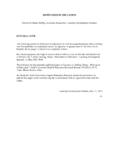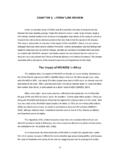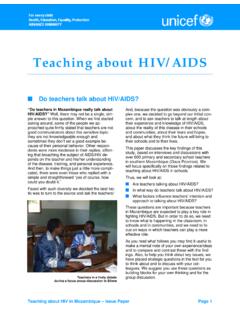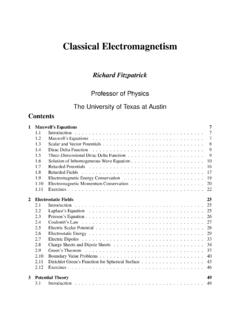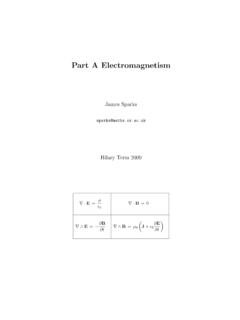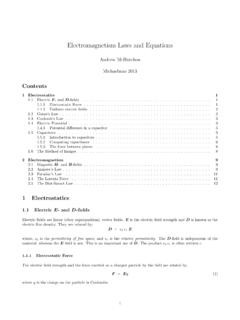Transcription of More Physics: electric - Learning Development Institute
1 More Physics: electriccharges and fields -electromagnetismRoy McWeenyBasic Books in ScienceBook 10 BASIC BOOKS IN SCIENCE a Series of books that startat the beginningBook 10 More Physics: electric charges andfields electromagnetismRoy McWeenyProfessore Emerito di Chimica Teorica, Universit`a di Pisa,Pisa (Italy)The Series is maintained, with regular updating and improvement, the books may be downloaded entirely free of chargeThis book is licensed under a Creative CommonsAttribution-ShareAlike Unported License.(Last updated 24 November 2011)BASIC BOOKS IN SCIENCEA cknowledgementsIn a world increasingly driven by information technology no educational experiment canhope to make a significant impact without effective bridges to the user community thestudents and their the case of Basic Books in Science (for brevity, the Series ), these bridges have beenprovided as a result of the enthusiasm and good will of Dr. David Peat (The Pari Centerfor New Learning ), who first offered to host the Series on his website, and of Dr.
2 JanVisser (The Learning Development Institute ), who set up a parallel channel for furtherdevelopment of the project. The credit for setting up and maintaining the bridgeheads,and for promoting the project in general, must go entirely to is a global enterprise with no boundaries and, as such, is sure to meet linguisticdifficulties: these will be reduced by providing translations into some of the world s mostwidely used languages. Dr. Angel S. Sanz (Madrid) is preparing Spanish versions of thebooks and his initiative is most warmly appreciate the interest shown by universities in Sub-Saharan Africa ( Universityof the Western Cape and Kenyatta University), where trainee teachers are making useof the Series; and that shown by the Illinois Mathematics and Science Academy (IMSA)where material from the Series is being used in teaching groups of refugee children frommany parts of the who have contributed to the Series in any way are warmly thanked: they have givenfreely of their time and energy for the love of Science.
3 Pisa, 30 August 2009 Roy McWeeny (Series Editor)iBASIC BOOKS IN SCIENCEA bout this bookThis book, like the others in the Series1, is written in simple English the language mostwidely used in science and technology. It builds on the foundations laid in Books 1-4,which covered many parts of Mathematics and Physics, and on someparts of Book 5,which refers to the structure and properties of matter in present book takes up the story from Book 4, which introduced the science of Me-chanics and showed how it could account for the motion of objects ranging from particlesto planets. Things move under the action of appliedforces(like pushes and pulls ).But some forces, like the one due to gravity , arise from theattractionbetween massiveobjects. You canfeelthe force due to gravity, which makes a body fall to the groundeven when nothing is touching it, but you can tseeit. We say there is afieldof force atany point in space and it is proportional to themassmof the body on which it having a massm, a body may carry anelectric chargeq; and another kind offorce may act on the body when it is placed in anelectric field.
4 If you double the quantityof chargeqthe force is also doubled; so the electric field felt by a charge is proportionalto the charge. The electric field is so similar to the gravitational field that you ll be ableto take over from Book 4 many things you know about already. InBook 5 you learntthat electric charge is carried byelementary particlessuch as theelectronand theproton; and that their charges are of two kinds,negativeandpositiverespectively. Soyou re already well on the way to understanding of this book is about fields. Electricity plays an important part in everyday life:think of electric lights, power stations where electricity isgenerated indynamos, andelectric motors, which use electricity to drive the machines in our factories;think ofradios and the telephone, through which we can communicate with people all over theworld and even beyond, in space! When you speak into the telephone, the sound ofyour voice sets up vibrations and these are used to makeelectronsmove along wires;thecurrentsproduced can be used to sendradio signalsthrough space; and these canbe picked up by aradio receivermillions of miles away and converted back into sounds!
5 By the end of this book you ll be ready to start understanding how all this is aims of the Series are described elsewhere, in Book ahead In Book 4, when you started on Physics, we said Physics is a big subject and you ll needmore than one book . Here is the next one! Book 4 was mainly aboutparticles, theways they move whenforcesact on them, and how the same laws of motion still holdgood for objects built up from particles however Book 10 we ll be more interested in thefieldsthat govern the interactions betweenparticles. The only field we knew about in Book 4 was that due togravity , which actson the mass of a particle and makes it fall, but now we ll be thinking about the fieldswhich act on particles that carry anelectric charge. Chapter 1 explains how two kinds of electric charge, positiveand negative, canbe defined in terms of theforcesbetween particles that carry charge. The force law(F=q1q2/r2) is so similar to that for masses that you can still use most of whatyou already know, provided you put in the + or signs and take a positive force asarepulsion, tending to increase the separation (r) of the particles, and a negativeone as anattraction, tending to decrease the separation.
6 It s as simple as that! Andit all links up with Book 5, where you first met theelectronand theproton thebasic negative and positive charges that are found in this chapter the charges are at rest: we re talking aboutelectrostatics. You lllearn about machines for making static electricity and about how it can be storedincondensersand used to makesparks. And you ll learn how all of electrostaticscan be understood in terms of a single basic principle Gauss s law. In Chapter 2 you ll be thinking about charges in motion, which produceelectriccurents. The currents are carried throughconductors materials which allowcharges, usually electrons, to flow through them. Other materials, which don tallow charge to pass, are calledinsulators; and in between there areresistances,which allowsomecharge to pass but are not very good at it!Long thincopper wiresare good conductors and are used in all electrical gad-gets. You ll study some simpleelectric circuits, in which circuit elements likecondensers and resistances are connected by wires so that current can flow , we ll make a connection with Chemistry (Book 5).
7 Batteries make a plentifulsupply of electricity from certainchemical reactionswhich depend on the transferof electrons between the atoms taking part. Chapter 3 again starts from discoveries made over 3000 years ago! that certainheavy stones could attract small pieces of iron, and that the iron itself could be giventhe same property by stroking the stone with it. The property is calledmagnetismand a piece of iron with this property is amagnet. When a magnet is free to move,one end of it always points the same way towards the North pole of the axisaround which the Earth turns; so magnets were first used in steeringships at such simple beginnings the whole theory of themagnetic fieldwas built upover the centuries. The magnetic field (B), like the electric field (E), is a vector;but unlike the electric field it acts only on amoving charge, pushing it away fromthe direction of motion. As a moving charge is an electriccurrent, magnetism andelectricity are closely related: you ll discover how an electric current can producea magnetic field; and how a magnetic field can exert a force on a current-carryingwire.
8 You re now ready to put all these ideas together and look atMaxwell s equa-tions one of those great breakthroughs that happen perhaps only once in a hun-dred years. In Chapter 4 you ll find how the fieldsEandB, and the electric chargesand currents that produce them, can all be related through justfourequations, setup by Maxwell about 130 years ago. This is difficult stuff, but if you ve got so faryou re ready to make the last step re going to need many of the ideas you ve picked up about fields, that varyfrom point to point in space (and in time!), and the differential equations that theyobey. You don t have tosolvethem at this point; it s enough just to understandwhat they mean. Then, in the rest of the book, you ll find they tell you how tobuild electric power stations, electric motors, radio transmitters, and many otherthings that can be found ready-made nowadays thanks to the work of all the otherpeople who ve made the rest of the journey from theprinciplesto the practice.
9 Coming up, in Chapter 5, you ll see how just one of Maxwell s equations (whichcan be written on the back of a bus ticket!) says all we need to know about dynamosand electric motors. As usual, we start from a simple model in which we imagine aloop of wire spinning in a magnetic field. Faraday discovered that the changingfluxof themagneticfield, passing through a wire loop, could produce anelectricfieldthat moves charge round the wire. Maxwell set up the equation that describes thiseffect; and this leads to two types of dynamo (usually called generators nowadays).One type givesdirect current always flowing in the same direction while the othergivesalternating current flowing alternately backwards and forwards. The DC andAC types differ only through a simple change in the electric motor is like a generator running in reverse: instead of using mechanicalpower to turn the loop and generate an electric current ittakes inelectric currentand generates power! It s as easy as , as you know already from Book 4, is the rate of doing work.
10 The generatorworks by turning mechanical energy into electrical energy;and you ll find that theprinciple ofenergy conservationstill holds good: you nevermakeenergy youjust push it around, from one form to another! By the end of Chapter 5 you llunderstand how electric power can bedistributed being carried into thousandsof homes and factories. Chapter 6 is about sending electric and magnetic effects throughspace, withoutusing wires. Fields can go through space in the form ofwaves, so we have to startiiiby thinking about waves in general. All kinds of wave motion are very similar,involving ideas likewavelength,frequency, and thevelocitywith which theytravel. And they are described by the same equations so when you ve studiedone you ve done them all! You ll find examples of setting up andsolving for waves on a vibrating string, which produce sound we come back to Maxwell s equations and show that any disturbance of theelectromagnetic fieldtravels out through space (is propagated ) with the enor-mous speed of almost 300 million metres per second!
